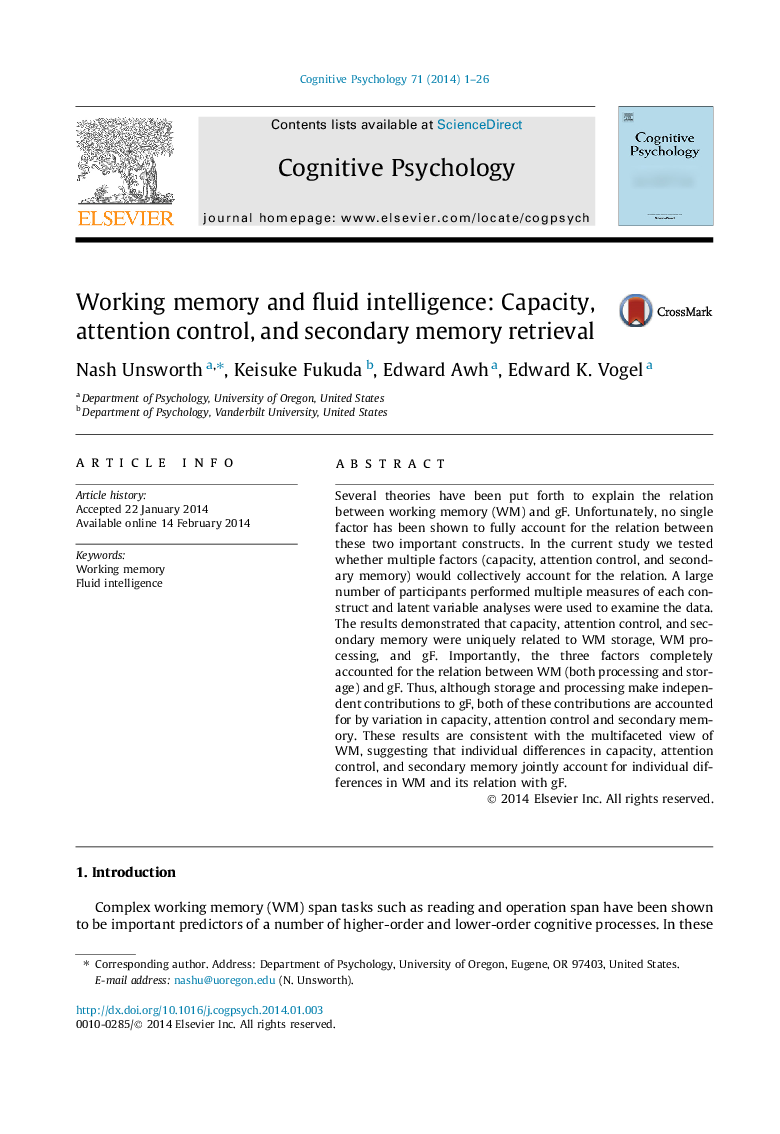| Article ID | Journal | Published Year | Pages | File Type |
|---|---|---|---|---|
| 916864 | Cognitive Psychology | 2014 | 26 Pages |
•The relation between working memory and fluid intelligence was examined.•Capacity, attention control, and secondary memory composed working memory.•The three factors mediated the working memory-fluid intelligence relation.•Each factor accounted for shared and unique variance in fluid intelligence.
Several theories have been put forth to explain the relation between working memory (WM) and gF. Unfortunately, no single factor has been shown to fully account for the relation between these two important constructs. In the current study we tested whether multiple factors (capacity, attention control, and secondary memory) would collectively account for the relation. A large number of participants performed multiple measures of each construct and latent variable analyses were used to examine the data. The results demonstrated that capacity, attention control, and secondary memory were uniquely related to WM storage, WM processing, and gF. Importantly, the three factors completely accounted for the relation between WM (both processing and storage) and gF. Thus, although storage and processing make independent contributions to gF, both of these contributions are accounted for by variation in capacity, attention control and secondary memory. These results are consistent with the multifaceted view of WM, suggesting that individual differences in capacity, attention control, and secondary memory jointly account for individual differences in WM and its relation with gF.
